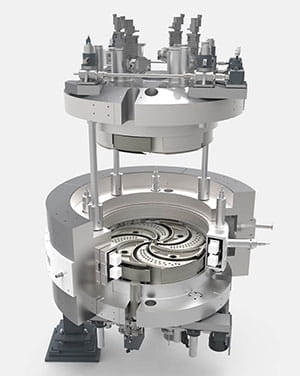FAQs
Proton therapy is appropriate for 80 percent to 85 percent of tumors that require radiation treatments as part of the treatment plan. Proton therapy:
- Is a treatment option for most solid tumors
- Is particularly useful for tumors that are difficult to reach surgically
- Sometimes can be used to destroy a tumor that may be resistant to traditional radiation therapy
- Is not used for cancers of the blood, such as leukemia
Both kinds of radiation therapy have the same goal: to damage the genetic code of cancer cells so that they cannot grow and spread.
The fundamental difference between proton therapy and traditional radiation therapy is the type of energy they use. Traditional radiation therapy uses photons (particles of visible light, also known as X-rays) to treat tumors. Doctors have been using traditional radiation therapy to treat tumors for more than 100 years. It delivers large doses of radiation to tumors, but also to healthy tissues or organs in its path.
Proton therapy uses protons (subatomic particles found in the nucleus of all atoms). It is less common, but it has been used for decades at a small number of institutions. Proton therapy can deliver a high dose of radiation to the tumor but a much lower dose to healthy tissues. As a result, patients typically experience fewer short- and long-term side effects.
Yes. We maintain the highest standards of safety at the Proton Therapy Center. Our radiation physicists are responsible for making sure the technology is working properly. Our team performs multiple safety checks to ensure the proton beam is delivered precisely and as prescribed by the radiation oncologist.
Proton therapy is painless. The most difficult task for patients is to lie completely still through the daily treatment. Our staff can make the treatment experience more comfortable by playing music, providing warm blankets and cushions. If needed, we can provide anesthesia, which will allow your child to sleep through the treatment sessions.
Treatment sessions take approximately 30-60 minutes. Most of that time will be spent positioning your child using X-rays, and making adjustments to the equipment to ensure accuracy. The actual radiation delivery lasts only a few minutes.
Many children experience only mild side effects from proton therapy. Some feel well enough after proton therapy sessions that they can attend school the same day, while others experience fatigue or nausea. Another common side effect is mild skin irritation or temporary hair loss at the site being treated.
If your child is receiving other therapies in addition to proton therapy, side effects from those therapies may be more noticeable.
Yes. Children who have cancer often receive more than one type of treatment. In addition to proton therapy, your child’s treatment plan could include surgery, chemotherapy and/or traditional radiation therapy.
Cincinnati Children’s partners with University of Cincinnati Medical Center and UC Physicians to offer proton therapy and traditional radiation therapy. Depending on your child’s needs, they may receive traditional radiation therapy at Precision Radiotherapy, located about 1½ miles from the Proton Therapy Center, or at the Barrett Center, located near the Cincinnati Children’s Main Campus.
Our doctors, nurses and radiation therapists will communicate with your child’s “home care” cancer care team before, during and after proton therapy.
During your child’s course of treatment at Cincinnati Children’s, one of our medical oncologists will oversee your child’s care to make sure everything goes according to the treatment plan. Your family will have full access to all of our services, such as guest services, child life, social work and financial counseling.
How the Cyclotron Works




